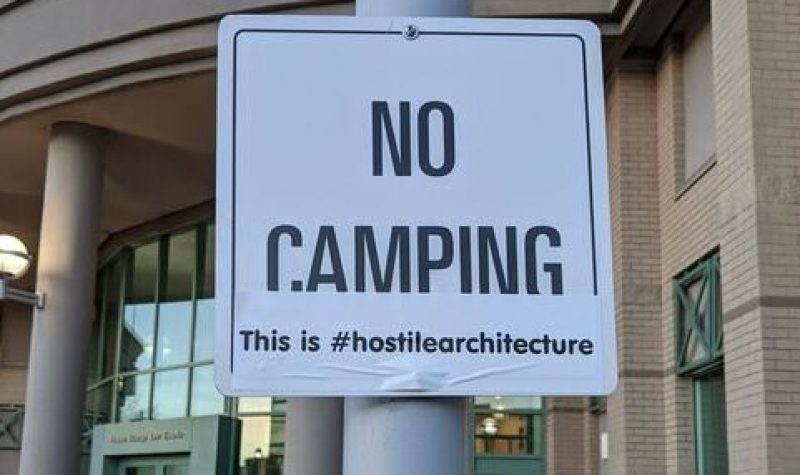Downtown Prince George is getting less hospitable to unhoused or marginally housed people prompting the question, what is public space and who is it for?
Cynthia Andal first heard the term ‘hostile architecture’ in Montreal, a city she says is covered in examples of design elements intended to make public space less comfortable for certain people. Earlier this year, Cynthia printed stickers with the words “this is #hostile architecture” to draw attention to its presence in Prince George. She points to a number of diverse examples, including benches with armrests, around the clock music outside of businesses, blue light, no loitering/no camping signs and bylaws, cobblestones, strategically placed rocks, and more. While some of these designs claim to be aesthetic, they also serve the function of ensuring people don't stay in the space comfortably for long.
With the backdrop of COVID-19 and the scaling back of public life more generally, the limitations on public space for those without a home to retreat to are even more pervasive, not to mention the dangers and difficulties of accessing shelter beds. Access to washrooms, showers, rest areas, and places to warm up are hard to come by and hostile architecture adds an additional layer of exclusion. Cynthia says its important that we notice hostile architecture in order to stem the spread. The stickers, she says, are just one way to raise the issue, and she is happy to share them with people if they contact her.
While the city of Prince George contends with conflicting interests in the conversation around how best to support a vibrant downtown, Cynthia's sticker remains and her message is an important one: Stop making public space less accommodating to those who use it the most.
Interview with Cynthia Andal (13 Nov 2020)


